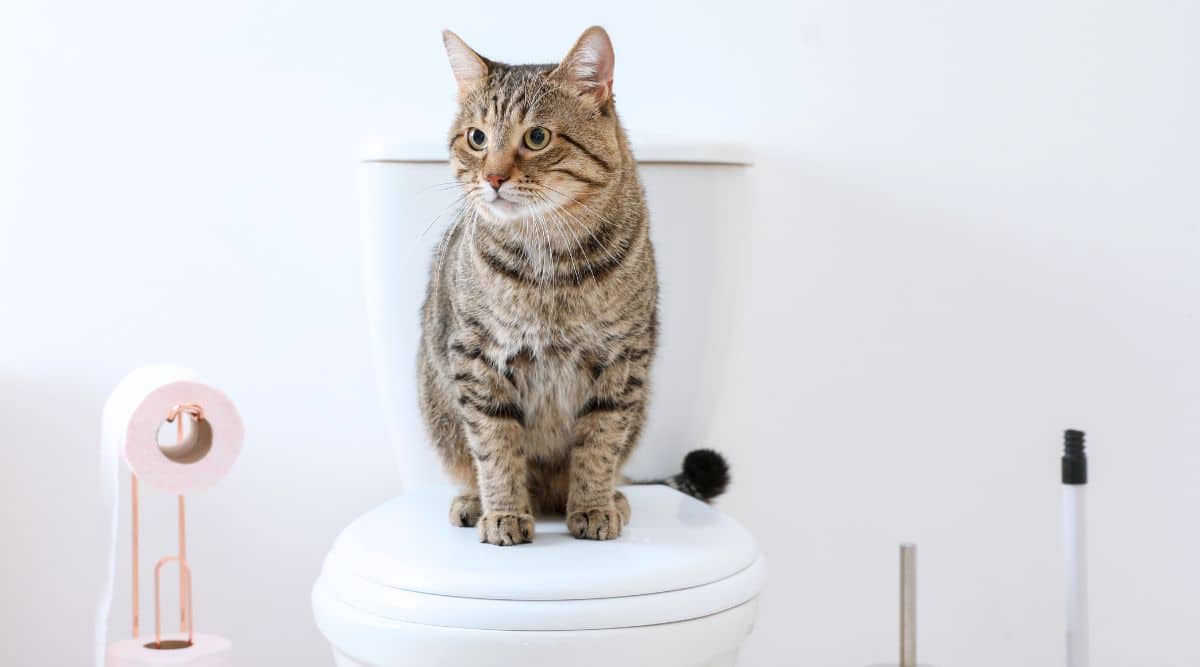Prevent Plumbing Problems: Never Flush Cat Poop Down Your Toilet - Professional Guidance
Prevent Plumbing Problems: Never Flush Cat Poop Down Your Toilet - Professional Guidance
Blog Article
Just how do you feel in relation to Don’t flush cat feces down the toilet?

Introduction
As feline proprietors, it's necessary to bear in mind exactly how we dispose of our feline good friends' waste. While it may appear convenient to flush pet cat poop down the bathroom, this technique can have harmful effects for both the environment and human health and wellness.
Environmental Impact
Flushing pet cat poop introduces dangerous pathogens and parasites right into the supply of water, posing a substantial danger to aquatic ecological communities. These impurities can negatively affect marine life and concession water high quality.
Health Risks
Along with ecological issues, purging pet cat waste can also present wellness risks to humans. Feline feces might contain Toxoplasma gondii, a parasite that can cause toxoplasmosis-- a potentially severe disease, especially for expectant women and individuals with weakened immune systems.
Alternatives to Flushing
Luckily, there are more secure and more responsible means to take care of feline poop. Think about the following alternatives:
1. Scoop and Dispose in Trash
The most typical technique of taking care of cat poop is to scoop it into a naturally degradable bag and toss it in the garbage. Make sure to make use of a dedicated litter scoop and get rid of the waste immediately.
2. Use Biodegradable Litter
Go with eco-friendly pet cat clutter made from products such as corn or wheat. These litters are environmentally friendly and can be safely dealt with in the trash.
3. Bury in the Yard
If you have a yard, consider hiding pet cat waste in an assigned area away from vegetable gardens and water resources. Make certain to dig deep adequate to stop contamination of groundwater.
4. Set Up a Pet Waste Disposal System
Purchase an animal waste disposal system specifically created for cat waste. These systems make use of enzymes to break down the waste, reducing smell and ecological effect.
Final thought
Accountable animal ownership expands past supplying food and shelter-- it also entails appropriate waste administration. By refraining from purging feline poop down the bathroom and opting for different disposal approaches, we can reduce our environmental impact and secure human health and wellness.
CAN I FLUSH MY CAT'S POOP DOWN THE TOILET?
Always avoid flushing cat poop down the drain because not only could it potentially contain harmful parasites called toxoplasmosis, the litter could sit in your line and lead to a clog.
Plenty of waste gets flushed down your toilet every day, so what harm could a little cat poop and cat litter do? The answer is a lot, which is why you never want to send it down your drains.
Can I Flush My Cat's Poop Down The Toilet?One of the biggest problems with flushing your cat’s presents is the harmful parasites in your feline’s stool called toxoplasmosis. Extremely dangerous for humans, especially pregnant women and people who are immunocompromised, these parasites can cause a multitude of problems for unborn babies and even cause death or miscarriage if the infection happens early. That’s why you should always avoid touching cat poop. Also, water systems are not equipped to handle toxoplasmosis and are unable to destroy the parasite before it’s sent back into the environment, potentially jeopardizing the health of local area wildlife, specifically marine life.
Flushing cat poop could also lead to a future drain clog. Try as you may to eliminate any litter from it, there will always still be some stuck on there – and even if it says flushable on the label, it’s not! Cat litter is made up of bentonite clay, which has the tendency to harden when wet, creating a thick, almost cement-like quality. Cat litter that ends up down the drain can expand from the moisture in the pipes and then harden, blocking any wastewater. If you have a septic tank or a cesspool, it cannot handle cat litter either, no matter what kind. If it solidifies in the tank, in any of the system’s major parts like the inlet baffle, it’ll create some expensive problems.
The best way to dispose of cat poop safely is to scoop it into a bag and throw it into the trash – and ways of dealing with the smell include adding baking soda and replacing the box more.
Now that we’ve explained the potential harm that flushing cat poop can cause to you and your drains, you might be wondering the best way of dealing with it. Unfortunately, it’s the old-fashioned way of scooping it into a bag and then placing it into a trash can. They also make pet-proof trash cans that lock in the smell, so that you don’t have to always immediately take it out. If you’re tired of smelling the litter box after even just one use from your feline, there’s things you can do to help combat that smell. Adding baking soda to the litter will reduce smells, but just don’t add too much or your cat will no longer want to use the box. You could also replace the box more frequently, at least once a year, as those smells can just seep inside the scratch marks. Lastly, try changing to a new litter formula – some are better with smells than others.

I'm certainly very enthusiastic about How to Dispose of Cat Poop and Litter Without Plastic Bags and I hope you enjoyed reading the blog post. So long as you liked our blog posting if you please do not forget to pass it around. Thank-you for your time spent reading it.
Schedule Free Estimate Report this page